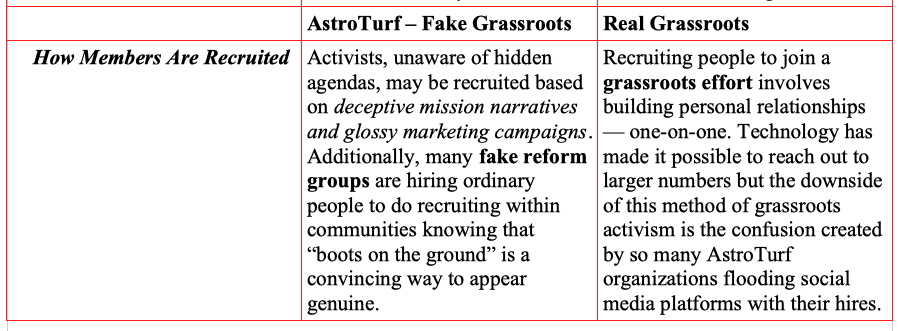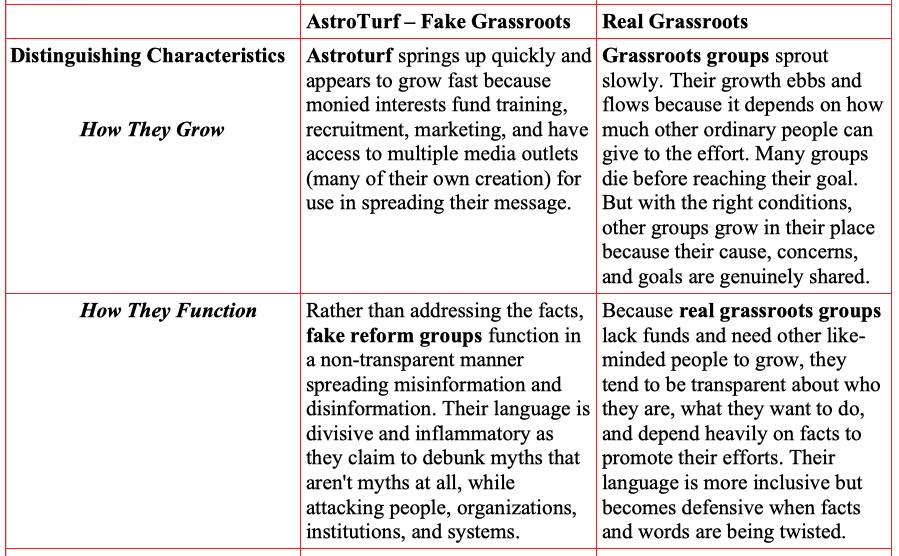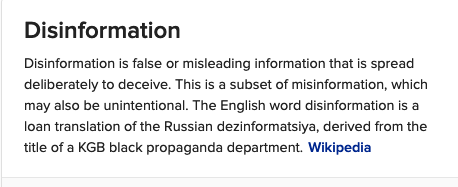The education reformers of the last 30 years —be they business, or be they political leaders— they did not make all our schools better. Instead, they made it exceedingly difficult for the public to identify real from fake reformers.
The marketing for Market-Based Reforms is exceptional but deceptive.
To distinguish misinformation from facts, people must know if their source is real and sincere about making all schools better.
“Astroturfing,” first coined by U.S. Senator Lloyd Bentsen of Texas in 1985, is when companies or even individuals mask their motives by putting it under the guise of a grassroots movement.
To unmask motives, people need to know who is behind the information they receive.
 Reformers of the last three decades passed Market-Based policies with No Child Left Behind (NCLB) being the most noteworthy. But their “hook” —selling the idea that setting “higher” standards and testing for them improves student achievement— proved false.
Reformers of the last three decades passed Market-Based policies with No Child Left Behind (NCLB) being the most noteworthy. But their “hook” —selling the idea that setting “higher” standards and testing for them improves student achievement— proved false.
“The overall test score effects of NCLB are clearly disappointing.”
Ladd, H. L. (2017, January). No child left behind: A deeply flawed federal policy. Journal of Policy Analysis and Management, 36(2), p.469.
By 2005, the flaws in NCLB were obvious to many. Its high-stakes testing mandate grew real grassroots resistance. Yet, the federal testing requirement remains in the 2015 version of the law called the Every Student Succeeds Act (ESSA). Evidently, there are forces at play here that are more powerful than parents, teachers, and facts.
Before jumping on any bandwagons, people need to ask themselves; what are the group’s goals? Do they sincerely support existing public schools AND the institution of public education?
 BOTTOM LINE: Judge organizations by the focus of their actions —not their words. Do their actions point to undermining public schools, and, to supporting private-sector moneyed interests? Or can you trust they are sincere about real reforms?
BOTTOM LINE: Judge organizations by the focus of their actions —not their words. Do their actions point to undermining public schools, and, to supporting private-sector moneyed interests? Or can you trust they are sincere about real reforms?
To better understand the extent to which astroturf groups influence the public and public policy, please take 10 minutes to listen patiently to this TED talk. It is not specific to education policy but the speaker’s major points apply.



